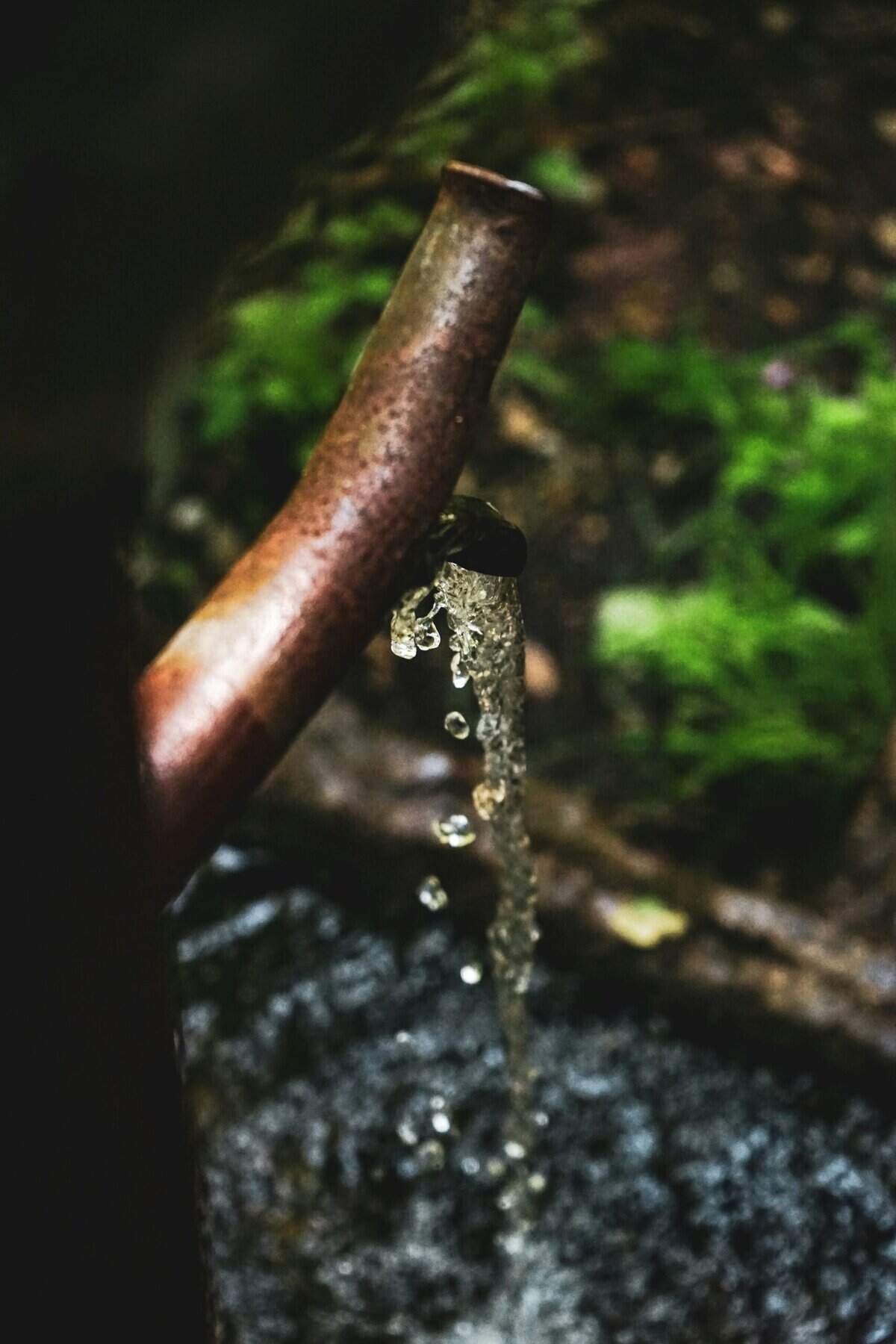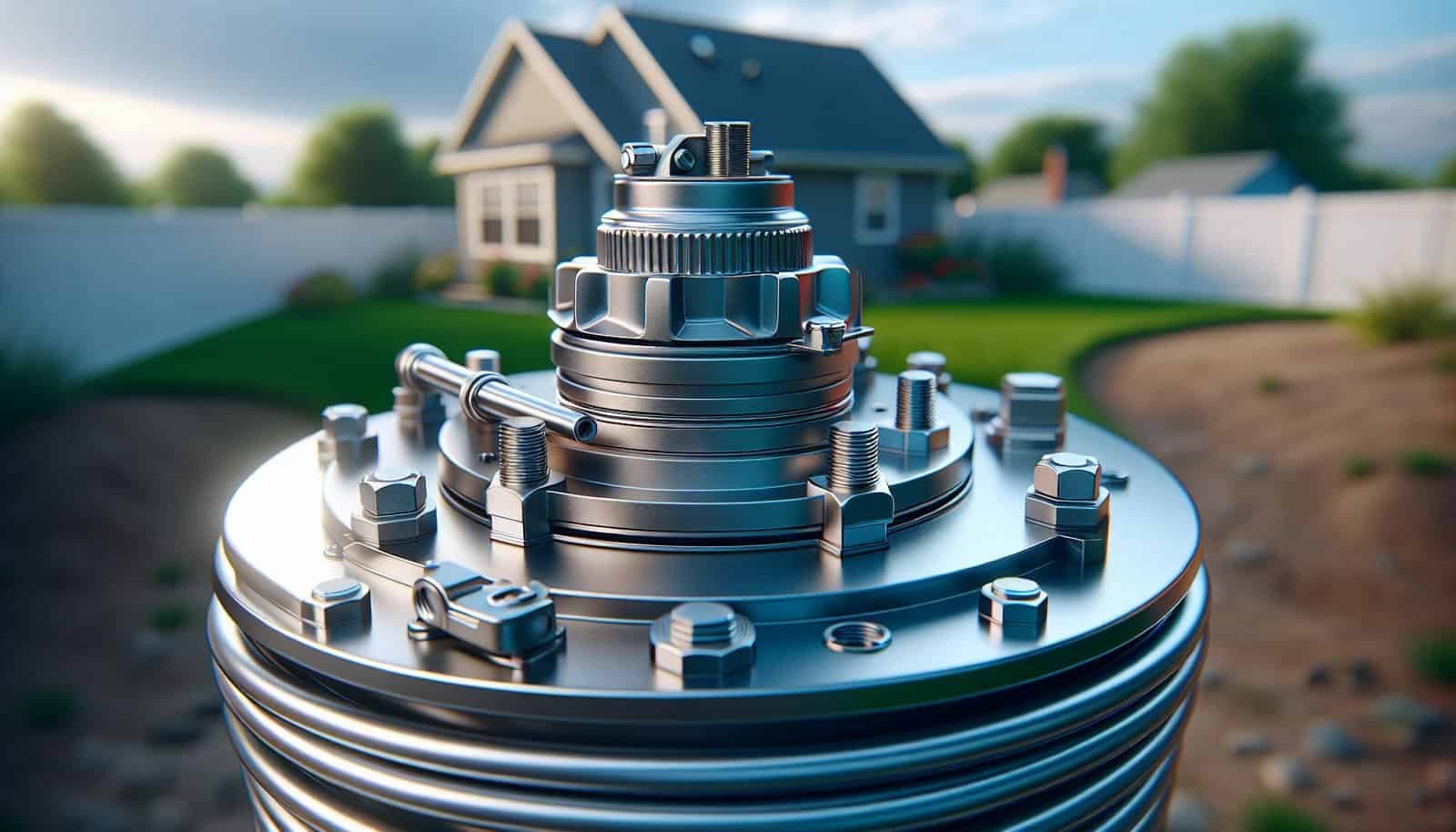?Are your residential wells meeting the safety standards that protect your water and your family in 2025?
What Safety Standards Apply To Residential Wells In 2025?
You’ll find that safety standards for residential wells in 2025 are shaped by a mix of federal guidance, state regulations, local codes, and industry best practices. Federal law (for example, the Safe Drinking Water Act) mandates standards for public water systems but generally does not regulate private wells that serve a single household. That means you rely mainly on your state and local health departments, permits, and professional well contractors to ensure well safety. Industry groups and consensus standards (such as those developed by NGWA, ANSI, ASTM, and other organizations) provide technical guidance that many states adopt or reference.
How federal vs. state authority works for your well
You should understand the division of responsibilities:
- Federal: Sets national standards for public systems and issues guidance for private wells, and has been moving toward regulating some emerging contaminants (for example, PFAS) at the national level. Federal agencies also provide technical resources.
- State and local: Typically set mandatory construction standards, permitting requirements, setback distances, testing and reporting requirements, and well abandonment rules for private wells. These are where most legally binding requirements for your well come from.
- Industry standards and professionals: Well drillers, pump installers, and laboratories follow technical standards and certifications that influence the safety and longevity of your well.
Key components of well safety standards you should know
You’ll want to check several technical and administrative elements that states commonly regulate or recommend:
Well construction and design
Construction rules cover depth, casing and screen materials, annular sealing (grout), sanitary seals, well cap design, and placement of the pump. Proper construction prevents surface contamination and preserves water quality.
- Casing and grout: Correct casing type and a continuous grout seal from the casing to a specified depth reduce risk of surface water infiltration.
- Sanitary seal and cap: A watertight sanitary seal and screened vent reduce contamination risks and animal entry.
- Screen and intake placement: Proper selection of screen size and correct placement below water table maintain yield and reduce sediment.
Siting and setback distances
You should keep the well a safe distance from contamination sources. Typical setbacks you’ll encounter vary by state, but common examples include:
- Septic system leach fields: 50–200 feet
- Septic tank: 10–50 feet
- Fuel tanks: 50–100+ feet
- Barns or livestock areas: 50–200 feet
- Property lines and roads: variable, often 10–25 feet
Always verify local setback rules. Table below summarizes typical ranges so you can compare to local codes.
| Source of contamination | Typical setback range (feet) | Why it matters |
|---|---|---|
| Septic leach field (absorption) | 50–200 | Septic leachate can carry bacteria and nitrates into shallow aquifers |
| Septic tank | 10–50 | Solids and near-surface leakage points |
| Fuel storage tanks | 50–100+ | Hydrocarbons and VOCs can contaminate groundwater |
| Barns/livestock pens | 50–200 | Manure can introduce nitrates and pathogens |
| Roads/driveways | 10–100 | Road salts, oil, and runoff can reach groundwater |
| Stormwater infiltration areas | 50–200 | Surface runoff often carries pollutants |
Testing and monitoring requirements
You should test your well water regularly. States often mandate initial water quality testing at the time of well permitting and sometimes require specific periodic testing. Even if not mandated, recommended testing helps protect your health:
- At least annually: Bacteria (total coliform, E. coli) and nitrate (especially if you have infants, pregnant women, or livestock).
- After construction, well repairs, or flooding: Test for bacteria, nitrates, and local contaminants of concern.
- Every 2–5 years: Comprehensive testing for heavy metals, VOCs, pesticides, and other region-specific contaminants.
- If you notice changes: Test immediately if you detect odors, tastes, discoloration, lower yield, or health changes in household members.
Disinfection, shock treatment, and remediation
You should be prepared to disinfect a contaminated well. Shock chlorination and professional remediation are common approaches. Regulations may specify procedures and documentation for repeat contamination events or chronic contamination.
Abandonment and sealing standards
You’ll be required in many places to properly abandon wells that won’t be used. Proper sealing prevents wells from becoming direct conduits for contamination. Standards typically require filling with grout to a specified depth and documentation of the plugging procedure.
Operator and contractor certifications
You should use licensed and certified well drillers and pump installers. States often require certification for people who construct, maintain, or decommission wells. Confirm contractor credentials and ask for references and compliance documentation.

Which contaminants are regulated or recommended to monitor in 2025?
Your testing priorities depend on where you live, but here are the most common contaminants you should be aware of, why they matter, and typical actions if detected.
| Contaminant | Health/household risks | Regulatory status (private wells) | Typical corrective actions |
|---|---|---|---|
| Total coliform / E. coli | Indicates fecal contamination; acute gastrointestinal illness risk | Not federally regulated for private wells — recommended testing; public MCL applies to public systems | Shock chlorinate, repair wellhead, fix septic/leach field; boil water/alternative supply until resolved |
| Nitrate / Nitrite | Infant methemoglobinemia (blue baby); problems for pregnant women | EPA MCL applies to public systems (10 mg/L as nitrate-N) but private wells are owner’s responsibility | Identify source (septic, fertilizers), treat with reverse osmosis or ion exchange, consider new well or blending |
| Lead | Neurological effects, especially in children | EPA action level applies to public systems; private wells should be tested | Replace plumbing fixtures, corrosion control difficult on private well — use POU filters (certified for lead), use bottled water for infants |
| Arsenic | Long-term cancer risk, skin issues | EPA MCL for public systems (10 µg/L); many states have specific guidance for wells | Use reverse osmosis, adsorption media (e.g., ferric oxide filters), source replacement |
| Volatile organic compounds (VOCs) | Various acute and chronic effects; some carcinogens | EPA MCLs for public systems; private well testing recommended if near industrial activities | Granular activated carbon, air stripping, or new water source |
| PFAS (per- and polyfluoroalkyl substances) | Linked to developmental, immune, and other effects | As of 2024, EPA proposed national PFAS rules; states may have standards—private well testing advised | Granular activated carbon, ion exchange, reverse osmosis; follow state guidance |
| Bacterial pathogens (Giardia, Cryptosporidium) | Gastrointestinal illness; more resistant to disinfection | No federal requirement for private wells; testing recommended when symptomatic or after flooding | UV disinfection, chlorination, fix source of contamination |
| Radon (in water) | Lung cancer (if water contributes to indoor air) | Not generally regulated for private wells; monitored in some areas | Aeration systems, aeration at point-of-entry |
| Salts (chloride, sodium) | Taste, corrosion, not usually acute health risk but affects those on sodium-restricted diets | Public standards for taste; private well owners should test if near road salt or saline intrusion | Blending, new source, specific treatment systems |
Note: For private wells, federal MCLs apply only to public water systems. Treat the table above as a guide to prioritize testing and treatment rather than as a list of federal requirements for your private well.
What new or emerging issues in 2025 should you be aware of?
You should watch these trends and regulatory movements because they affect what you need to test for and what your local authorities may require:
PFAS and emerging contaminants
In recent years, PFAS received increased regulatory attention. You should check your state health department for 2025 guidance or limits; many states have adopted their own testing guidance or limits even before federal rules are finalized.
Climate impacts on wells
Droughts, flooding, and shifts in recharge patterns can affect well water quantity and quality. Shallow wells are especially vulnerable to seasonal drying and contamination from surface runoff. You should monitor yield and test after extreme events.
Increased state-level regulation
Because the federal government typically doesn’t regulate private wells, many states are tightening construction, testing, and reporting requirements. You should expect more rigorous permitting and potential mandatory testing in some jurisdictions.

What are the specific risks of shallow wells in 2025?
Shallow wells (commonly defined as those drawing from near-surface aquifers or less-protected groundwater) carry particular risks you need to manage carefully.
Higher vulnerability to surface contamination
You’ll find that shallow wells are more likely to be contaminated by nearby septic systems, agricultural runoff (nitrates and pesticides), road runoff, animal waste, or leaking fuel tanks because there’s less natural filtration between the surface and the water-bearing zone.
Greater sensitivity to seasonal changes and drought
Shallow wells typically have small storage volumes and a water table that responds quickly to rainfall. During droughts they can go dry, and during wet periods they can accept more surface infiltration — which can bring contaminants.
Faster temperature-driven microbial growth
Warmer shallow groundwater can favor bacterial growth and increase the likelihood of coliform detection. If your well is shallow and your region is warming, you should test more frequently for bacteria.
Increased risk during flooding
If floodwaters overtop the wellhead or saturate the area, you’ll face direct risk of bacterial and chemical contamination. You should test and likely disinfect the well after flooding events.
Lower filtration and attenuation of contaminants
Subsurface transport times are short for shallow wells, so contaminants applied to the surface (pesticides, nitrates, pathogens) can reach your water faster than for deep wells.
Table — Typical shallow well risks and your responsive actions
| Risk | Why it matters for your health/well | What you should do |
|---|---|---|
| Fecal bacteria from septic/livestock | Immediate health risk | Test frequently; maintain setbacks; repair septic; shock chlorinate; use bottled water if positive |
| Nitrate contamination | Dangerous for infants and pregnant women | Annual nitrate testing; identify source; treatment via RO/ion exchange; possibly new well |
| Pesticides/herbicides | Chronic and acute health concerns | Test after application seasons; buffer zones around well; consider treatment |
| Fuel/hydrocarbon leaks | VOCs can be toxic/carcinogenic | Avoid storage near well; test if suspected; replace or treat with carbon/air stripping |
| Seasonal low yield | Water shortages | Monitor static water level; conserve; consider deeper replacement well or storage |
| Flood-related contamination | Pathogens and chemicals | Test and disinfect after flooding; elevate wellhead or install sealed cap |
Practical guidance: testing and maintenance schedule you should follow
You’ll keep your well safer by following a regular testing and maintenance routine. Below is a practical schedule many experts recommend; adapt it to local rules and conditions.
| Action | Frequency | Notes |
|---|---|---|
| Test for total coliform and E. coli | Annually (and after repairs/flooding) | More frequently if you have infants or immunocompromised residents |
| Test for nitrate | Annually (or more if agricultural area) | Critical for households with infants/pregnant women |
| Comprehensive test (metals, VOCs, pesticides, fluoride, sulfate) | Every 2–5 years | Frequency depends on local geology and land use |
| PFAS testing | If local sources exist or upon advisories | Check state guidance for recommended frequency |
| Visual inspection of wellhead, cap, and vents | Semi-annually | Look for damage, evidence of animals, cracks, or ponding water near well |
| Check pressure tank and pump performance | Annually | Low pressure may indicate pump issues or low yield |
| Shock chlorination | After contamination, repair, or as recommended | Consider professional help for complex contamination |
| Professional well inspection | Every 3–5 years | A licensed driller can check casing, grout, and yield |

How to respond if your water test shows contamination
If you get a positive result or an exceedance, you should act quickly:
Immediate steps for bacterial contamination
- Stop using water for drinking and cooking. Use bottled water or boil water for at least one minute (boiling does not remove chemical contaminants).
- Contact a licensed well contractor or your local health department.
- Shock chlorinate the well if advised by health officials or a professional.
- Identify and fix the source (septic, surface water pooling, damaged cap).
- Retest after disinfection and repair.
If nitrates are high
- Do not give the water to infants or pregnant women; use bottled water or an alternative source.
- Identify probable sources (nearby agricultural runoff or failing septic systems).
- Treat with reverse osmosis, ion exchange, or install a new water source if remediation is not feasible.
For PFAS or VOCs
- Check state guidance for actionable levels; some states recommend immediate action at low concentrations.
- Avoid using contaminated water for drinking and cooking until a certified treatment system is installed or a new source is found.
- Consider granular activated carbon, ion exchange, or reverse osmosis systems certified for those contaminants.
Long-term remediation
- You may need to replace a shallow well with a properly sited deeper well in severe cases.
- Redesign wellhead protection: add proper grading, divert surface runoff, install an elevated sanitary seal.
- Coordinate with neighbors and local authorities if contamination source is community-wide (e.g., agricultural or industrial).
Choosing treatment technologies for your well water
You’ll base treatment selection on contaminant type, concentration, flow rates, and household needs.
Disinfection and pathogen control
- Shock chlorination: Temporary disinfection for bacterial events; does not remove persistent contamination.
- UV purification: Effective for bacteria, viruses, and protozoa (does not remove chemicals).
- Continuous chlorination: For ongoing disinfection needs; may require maintenance and proper dosing.
Chemical removal
- Reverse osmosis (RO): Removes nitrates, arsenic (to some extent), lead, PFAS, salts, and many VOCs at point-of-use. Requires pre-filtration and produces wastewater.
- Granular activated carbon (GAC): Good for many VOCs and some PFAS; not effective for all PFAS compounds.
- Ion exchange: Effective for nitrate and some PFAS; may require regeneration and disposal of brine.
- Specialized adsorption media: For arsenic and specific PFAS sequences (follow manufacturer guidance).
Whole-house vs. point-of-use
- Whole-house filtration treats all water entering your house (recommended for contaminants that affect appliances, skin, or inhalation risks).
- Point-of-use (POU) systems (e.g., under sink RO) treat only drinking and cooking water and are often less expensive. You’ll decide based on contaminant distribution and budget.

Costs and budgeting considerations you should plan for
You’ll face a range of costs depending on location, depth, and required technologies. Typical cost elements include:
- Well drilling and construction (new well): Highly variable — a few thousand dollars for a shallow well to tens of thousands for deep wells in difficult geology.
- Water testing: Basic tests (bacteria, nitrate) might cost $50–$200; comprehensive panels and specialty tests cost more.
- Pump replacement: $500–$2,500 or higher depending on pump type.
- Treatment systems: POU RO systems $300–$2,500; whole-house systems $1,500–$15,000 depending on complexity and contaminant.
- Abandonment (plugging) of old wells: $300–$2,000 typically, depending on method and depth.
- Professional inspections and certifications: Varies by provider.
Ask for itemized quotes, warranties, and references from contractors. Consider lifecycle costs of treatment (media replacement, electricity, maintenance).
How to find accurate local information and certified help
You should rely on local resources because state and local rules vary:
- State or county health department: Primary source for well construction codes, test requirements, permit procedures, and approved labs.
- Licensed well contractors and pump installers: Confirm license numbers and ask for proof of insurance and compliance with local codes.
- Accredited laboratories: Ensure testing labs are state-certified or accredited for drinking water testing.
- Extension services and state geological surveys: Offer local groundwater information and advice on likely contaminants.

Steps to protect your well and reduce risks now
You can take practical actions immediately to improve your well’s safety and resilience:
- Mark the well location and maintain clear space around it to prevent damage.
- Maintain setbacks—do not store chemicals, fuel tanks, or waste near the well.
- Grade the soil away from the well casing to avoid surface water pooling.
- Inspect the well cap and vent for damage, and replace cracked or missing caps.
- Test annually for bacteria and nitrates, and follow a periodic comprehensive testing plan.
- Keep records of tests, maintenance, pump work, and any changes to your property that might affect water quality.
- If you suspect contamination, use bottled water for drinking and cooking until resolved.
Typical permitting and documentation process you will encounter
When you build, replace, or abandon a well you’ll generally go through these steps:
- Submit permit application to state/local health department including proposed location, construction plan, and setback compliance.
- Licensed driller constructs the well following state standards and issues a completion report.
- Initial water quality testing may be required before the well is approved for potable use.
- Keep the completion report and test results available for future sale or inspections.
- If you abandon a well, a licensed driller must plug the well using approved materials and provide a sealing certificate.
Final checklist — what you should do in 2025 to keep your well safe
You’ll benefit from a simple checklist to keep track of actions:
- Annual: Test for coliform and nitrate; inspect wellhead; review pump performance.
- After storms/flooding/freeze: Test water, disinfect if necessary.
- Every 2–5 years: Comprehensive water analysis including metals, VOCs, and region-specific contaminants.
- When buying/selling a property: Request well construction records and recent water tests; consider a professional well inspection.
- If contamination is detected: Use safe water sources, contact health officials and a certified professional, and follow remediation and retest guidance.
Where to get help and who to contact
You should reach out to these resources when you need assistance:
- State or county environmental health or well program (for permits, standards, and lab lists).
- Local licensed well drillers and pump specialists (construction and repairs).
- Certified water testing laboratories (for reliable test results).
- Extension services or state geological survey (for local aquifer information).
- Local or regional drinking water experts if you suspect PFAS or complex contamination.
Closing thoughts
You’re responsible for your private well’s safety, and in 2025 the landscape includes stronger state-level oversight, increasing attention to emerging contaminants, and ongoing climate-related risks that particularly affect shallow wells. By following recommended testing schedules, maintaining the well properly, using certified professionals, and monitoring local regulatory changes (especially for PFAS and other emerging contaminants), you’ll greatly reduce risks to your health and your home’s water supply.
If you want, you can tell me your state or region and I’ll help you find the specific state agency, likely contaminants of local concern, and recommended testing frequency tailored to your area.
